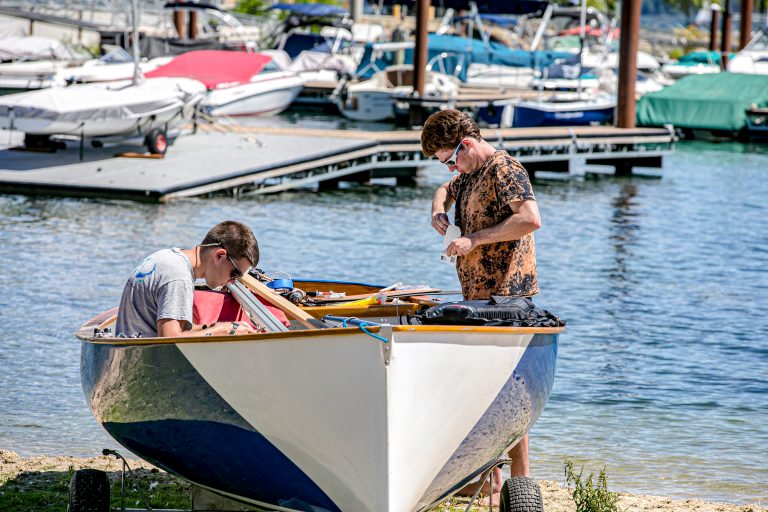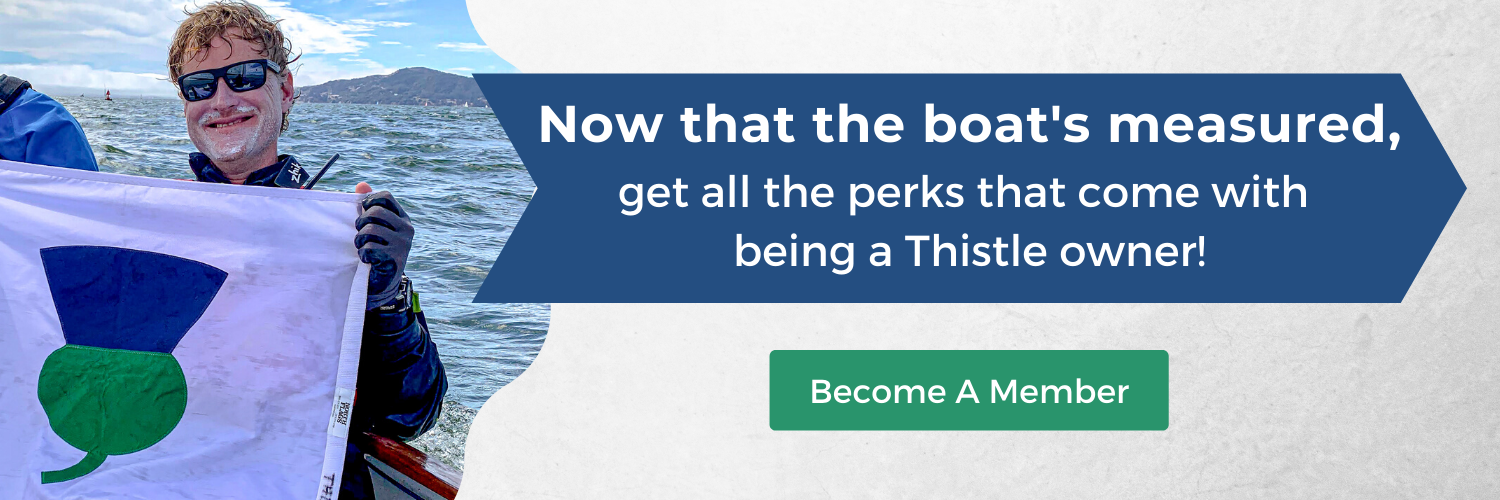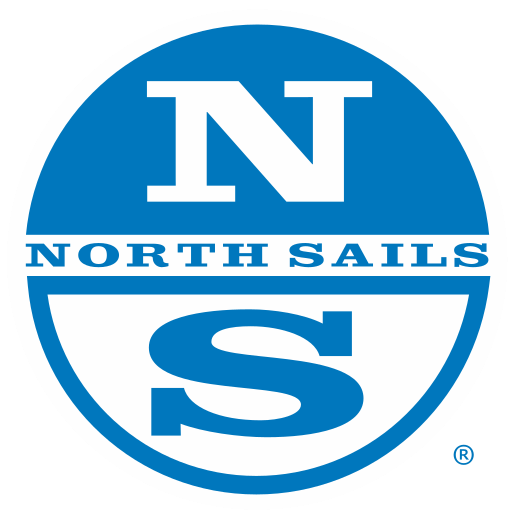How To Measure
Thistle Measurements FAQs
Looking to measure your Thistle? That’s great! We’re here to help however we can.
Keep reading for commonly-asked questions when it comes to measurement, plus step-by-step instructions on how to take each measurement.
You’ll need the owner of a registered Thistle to help measure. Use the Find a Fleet map to find one!

THISTLE MEASUREMENT FAQS
WHY measure your boat:
Your boat has to be measured for you to be a registered and dues-paid member (you might hear us call it “R&D’d”). Why does that matter? Registered and dues paid sailors can participate in regattas and vote on class issues. Plus, your membership gives the class resources to better support you.
WHEN to measure your boat:
- If the boat is new to you. Each time a boat changes owners it needs to be measured.
- If the boat has had a major repair or an extensive rebuild.
WHO needs to help measure:
You will need the owner of a registered Thistle to assist in measuring. If you’re new to the class, check out our Find a Fleet map to find and contact a Thistler near you. Already a member and not sure who to ask? Give your District Governor a call.
HOW LONG Will Measuring Take:
It should take less than an hour (20 minutes if your trusted Thistler friend is a seasoned measurement professional).
HOW To Measure Your Boat
- Find a seasoned Thistler (the skipper of a registered boat) who’s familiar with these measurements.
- Print a copy of the official Thistle measurement certificate.
- Gather the necessary measurement equipment (see list below).
- Use the instructions below and go to it!
- Submit one completed and signed certificate to the Thistle Class National Secretary.
- Pay the $20 measurement certificate registration fee (online at the TCA store or as a check to the TCA).
ON MEASURING THE HULL
By Ron Smith (#1285) and updated by the TCA measurement committee in 2020
If you are new to the Class, or if you are thinking about buying or selling a Thistle, or if you’re willing to help new Thistlers get their boats measured, this information is for you. If you’re an old hand at it, look it over anyway. You’ll be reassured that you’re doing it right. So let’s go down the list of hull measurements on the official measurement certificate.
Equipment needed (bolded in each section):
- Official Thistle Measurement Certificate
- Pencil
- Steel tape measure (all)
- Straight edge (S, T, C, D requires 2)
- Large square (M and J)
- Optional: 18 feet of thin wire, 2 boards, 2 clamps (for R measurements, which aren’t on the current measurement sheet)
When you’re done, please send the completed form to the Thistle Class National Secretary.
Make sure you include:
- Boat owner’s signature
- Witness’s signature
- $20 registration fee (either online at our class store or as a check to the TCA)
Email a PDF copy to:
thistleclassassociation@gmail.com
OR
Send the paper copy to:
Thistle Class Association
645 E. Park Avenue
Barberton, OH 44203
Dimension L
L is the length from the aft face of the transom to the “stem.” By “stem” is meant the front extreme of the boat not counting the stem molding or bow plate. Use a steel tape measure held parallel to the lines of the hull. Measure from the stem to a straight edge held against the transom and projecting above it. The “lines” of the hull are level when the boat has the bottom of its transom 9 inches above the very bottom of the hull at station 6 as shown on the measurement certificate.
Dimension S
Measure “S” from the top of the stem (not including the bow plate) down to the point of intersection of the stem line and the bottom line. This point may be premarked on a straight edge held against the stem. This measurement is to be made as if there were no moldings screwed to or molded into the hull.
Dimension T
First, determine and mark the “top” of the transom using a straight edge connecting the sheers at both sides of the transom. Measure the center height from this point down to the bottom of the transom. Again, exclude the moldings from your measurement.
Dimension C
First, find the front of the centerboard slot by separating the gasket and make a mark there. Measure the distance from this mark to the stem line. Again, you need a straight edge to extend the stem line downward and, again, stretch the tape parallel to the hull “lines.”
Dimensions M & J
These are measured with the mast rigged with normal rig tension applied, of course. For the “M” measurement, locate the aft edge of the intersection of the jib stay with the bow plate. If you have a jib stay tang extending above the bow-plate, the intersection can be located by using a straight edge against the jib stay. If the stay fastens below the bowplate, then the point in question is the bearing point of the stay against the bow plate. Measure “M” from this point to the stem excluding the molding. The “J” dimension is measured from this point back to the front edge of the mast at the mast step. This measurement is tricky because it is taken parallel to the hull lines. Use a large square to do it right. Set the square up against the mast with the short leg pointing up and the long leg forward. Level the long leg to be parallel to the hull lines and then measure “J” from the back edge of the square keeping the tape level at the same time. It isn’t hard with three pairs of hands working. Note that there are two different J’s listed in the certificate. J1 is for the old masts and J2 is for the new mast.
Dimension B
B is the beam at station 5’6”. It is measured between the outer edges of the sheer. If the sheers are hidden under a one-piece rail, just measure to the outer edge of the rails and subtract the width of the outwhales.
Dimension D
D is the height of the sheer at station 5’6” and it’s another tricky one. Two long straight edges are needed, one laid across the top of the sheer and one blocked up against the bottom, both located at station 5’6”. You don’t need to get the bottom one level if you measure straight down from the sheer. Measure the distance between the straight edges on both sides of the hull and average the two readings. Now, subtract out the thickness of the bottom molding.
Dimension W
W is the width of the rails. This is measured across the extreme inner and outer edges of the rail.
Dimension X
X is measured on the transom between the outer edges of the hull skin at the sheer. Simple!
Dimension TH - CMR 70
On boats using a traveler as permitted by CMR 4, the transom height (TH) is defined as the distance between the top of the traveler track at the centerline and the keel at station 17, excluding the molding. Travelers installed in accordance with CMR 4 must be installed so that they maintain an arc as close to the original as possible.
Dimension Y
Be sure to take this dimension at the halfway point between the Break Point and the tip of the board. Unlike the mainsail you can’t fold the board in half to determine the halfway point, it is a good idea to measure the halfway point from both the Break Point and the tip to be sure they agree. Then measure the Y dimension to the trailing edge of the board perpendicular to the leading edge.
Cross Section of Boom
Even though they are typically equal for aluminum booms, please remember to record both height and width of boom on the measurement form.
Dimensions R1, R2, & R13 (Optional Measurement)
These are not on the current measurement certificate but, nonetheless, they are extremely important because they control the so-called “Rocker Curve.” Stretch a wire between two boards, one clamped to the transom and one held on the stem. This taut wire is to intersect the transom board at a point 9 inches below the bottom of the transom and should just barely touch the bottom (somewhere near station 6), being adjusted up or down by moving the board held at the bow. You are now ready to make the “R” measurements. At station 1, measure vertically from the wire to the bottom (ignoring the molding)—this is R1. Do the same at stations 2 and 13 and you are finished.






